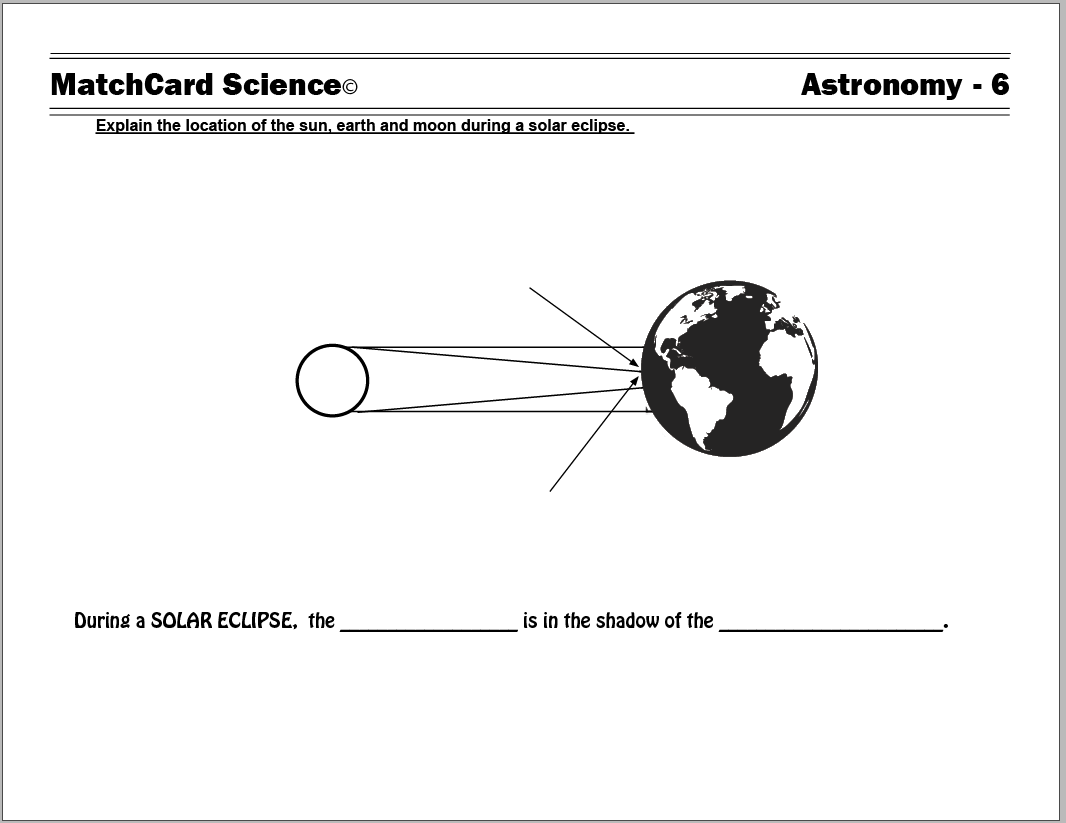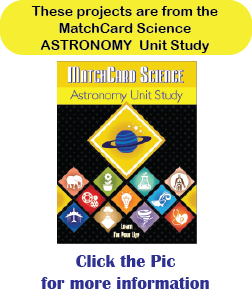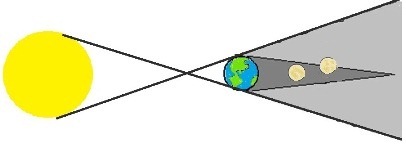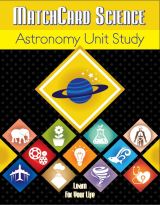Solar Eclipse Worksheet
Compare Solar vs. Lunar Eclipse
Identify the cause of a solar eclipse and compare with a lunar eclipse.
Free Download Below


Solar and Lunar Eclipse
Objective: Explain the location of the sun, earth and moon during a solar eclipse.MatchCard: Download below.
Astronomy MatchCard 5 covers the lunar eclipse. Astronomy MatchCard 5 describes a solar eclipse.
Solar Eclipse

Lunar Eclipse

Memory Aid
Having trouble remembering which is which (solar or lunar?) The eclipse is named after whichever celestial body is blocked by the shadow. Solar eclipse - you can't see the sun. Lunar eclipse- you can't see the moon. Your memory loss has just been eclipsed!Download and Use the Solar Eclipse MatchCard


Click image to go to download.
This is MatchCard #6 of the Astronomy Unit Study. Find more information on MatchCard Science below.
Learn About the Solar Eclipse
Demonstrate a Solar Eclipse
Have the student(s) face a blank wall. Standing behind the them, shine a flashlight on the wall. Explain that the light represents the light from the sun, and the wall is the Earth's surface.Use a small ball on a string and move it slowly across the light, as far from the light source as you can reach. This is the moon. If you have a paddle ball set with the ball on a string, the ball will make a great moon. Otherwise, you can improvise by taping yarn, string, or tooth floss to any small ball.
The students will notice when the "moon" casts a shadow on the Earth. Ask what people on the Earth's surface would see during a solar eclipse.
Use a second demonstration to further solidify their understanding of the location of the three celestial bodies durng a solar eclipse. Using a globe, model of the Earth, and small ball for a moon, position the objects so that the moon is between the Earth and sun.
Compare With Lunar Eclipse
If you previously did the activities for the lunar eclipse, refer to them now. (See the link above under "lunar eclipse.") With the lunar eclipse, the Earth was between the sun and moon and prevents the moon from reflecting the sun's light.Solar and Lunar Eclipse MatchCards
Show the MatchCards for both types of eclipses (Astronomy MatchCards #4 and #5.) We will learn more about the two types of the solar eclipse shortly. Have them point to the diagram and reiterate the position of the moon and Earth in comparison to the sun for both lunar and solar eclipses.Paper Plate Game
Make paper plate (or construction paper) models of the sun, Earth, and moon. As you call out "Lunar Eclipse" or "Solar Eclipse", they have to quickly move their pieces into the correct positions.You can also play this game with two or three kids. One person is the sun, one the moon, and one the Earth. (With only two kids, a large light could represent the sun.) As "lunar" or "solar" are called out, they need to arrange themselves correctly.
Total or Partial Eclipse
A large flashlight or overhead light with several bulbs can demonstrate the difference between a partial and total eclipse.The shadows cast by such a light will have a darker, clearer center; as well as a fuzzier, lighter perimeter. Because the light is large enough and coming from more than one angle, it casts the inner and outer shadow.
Those in the darkest shadow experience a total eclipse. In the lighter, outer shadow, a partial eclipse occurs.
Internet Activity
Use the internet to find pictures of partial and total eclipses. Also find when the next projected eclipse will be. What part of the Earth will be affected.Safety
Everyone should be warned of the dangers of looking at a solar eclipse with the bare eye which can damage the retina.MatchCard Science
How To Use MatchCards

Download the FREE MatchCard Science Instructor's Guide and see how MatchCards can make building their science knowledge base fun.
Astronomy Unit Study

Explore the universe with the MatchCard Science Astronomy Unit Study..
12 Science Unit Studies

Chemistry is only one of twelve complete unit studies for kids in 3rd to 8th grade.
Comprehensive objectives, hands-on projects, suggested science fair experiments, and the fun game-like MatchCards keep them interested in learning science. See all twelve MatchCard Science Unit Studies.
About Our Site
Hands-On Learning













